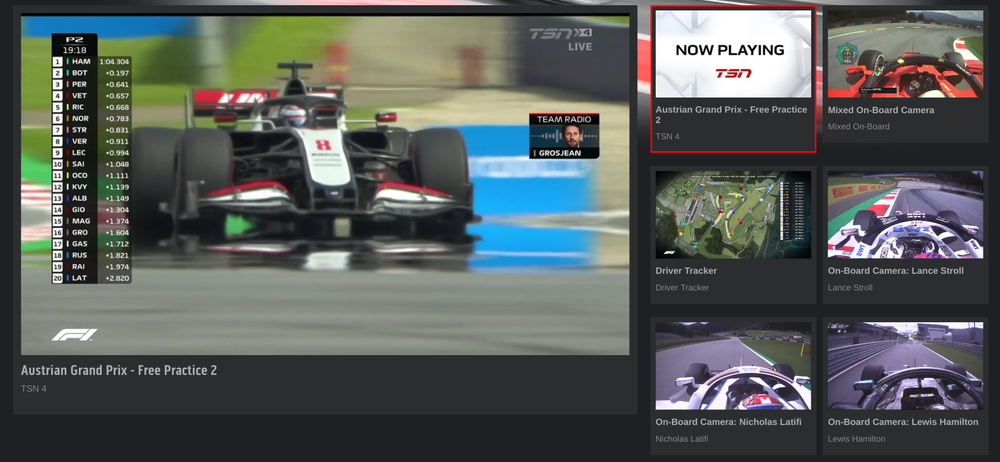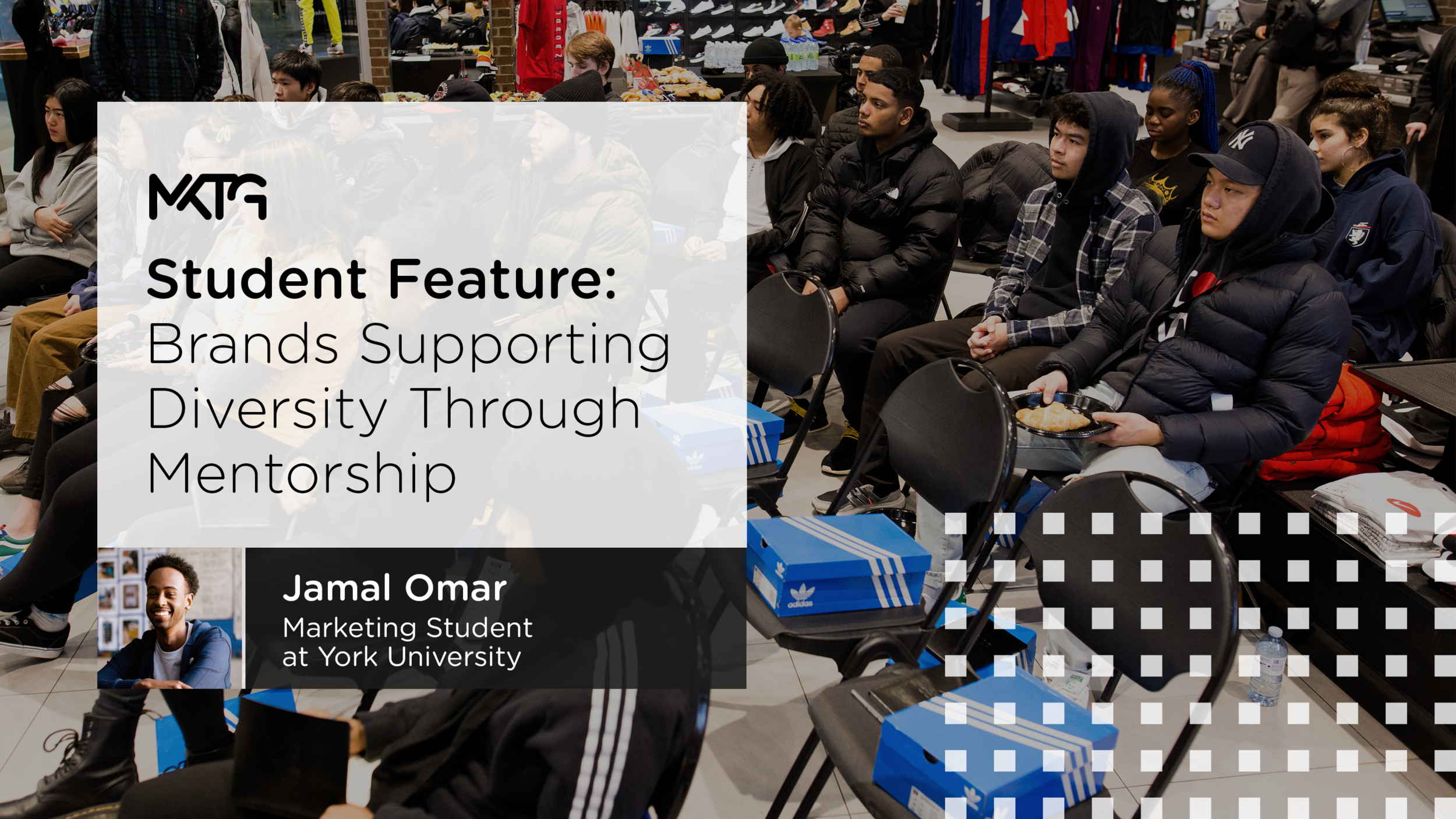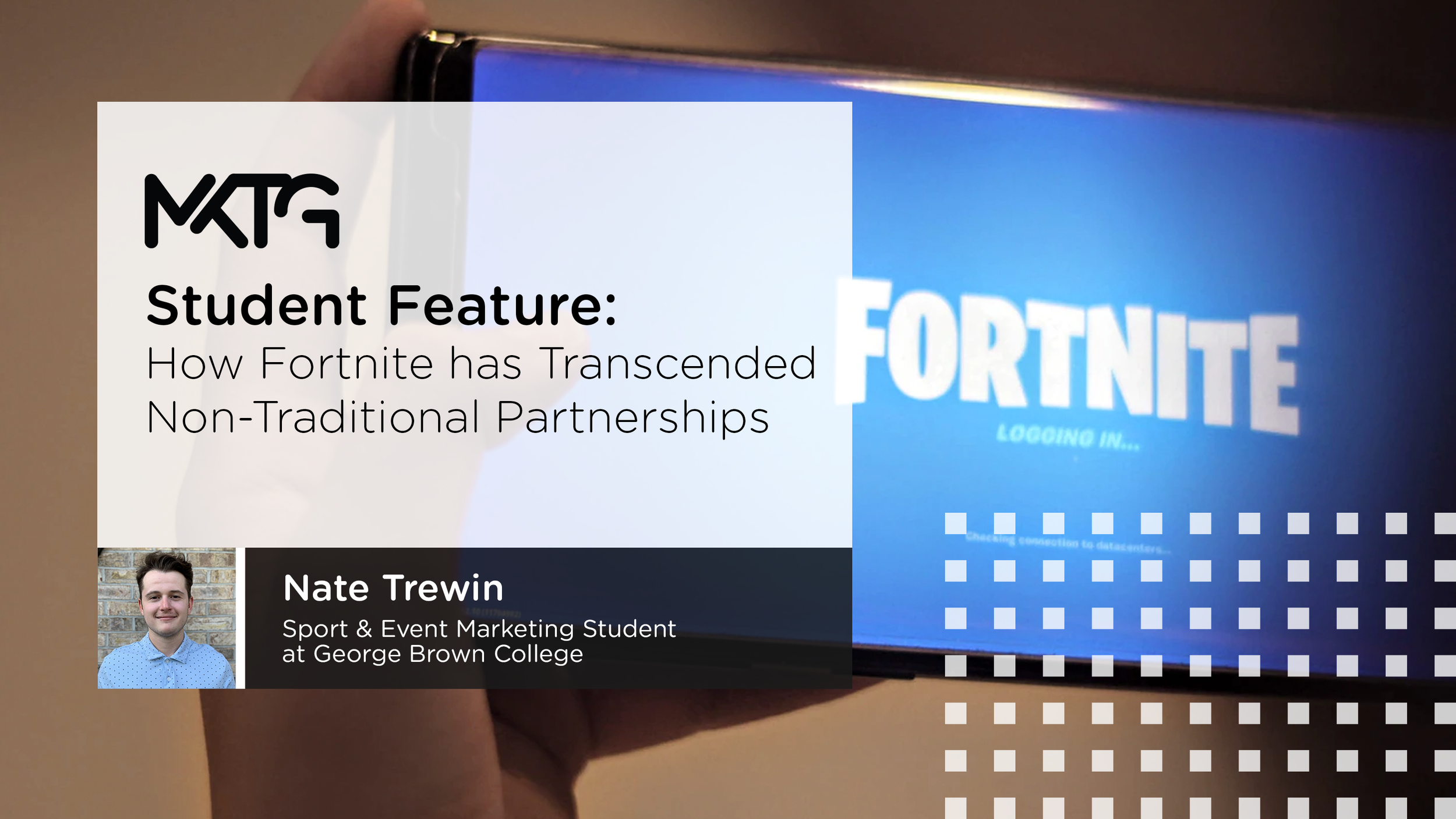Re-engaging Sports Fans in the COVID-19 Landscape
Now is an interesting time for our industry. There are tons of students starting their sports marketing and sponsorship careers who are trying to navigate what’s next. So we at MKTG Canada wanted to profile some of the best and brightest up and coming students in the sport and event industry and turn the pen on our company blog over to them. In the coming weeks, we will publish thinking from students breaking into the industry. We have enjoyed the experience chatting with them, sparring over ideas, and giving them builds on their work. We are proud to profile their words and talents and we hope you enjoy reading them. Know a student who wants to be profiled in these pages? Are you a student yourself? Get in touch with us @mktg_canada on Instagram.

About the Author
Jake considers himself a swiss army knife when it comes to his interests and abilities as the diverse influences in his life have helped develop his passion for learning just about anything new. More than anything though, he enjoys pairing his love for sport and travel by taking in events around the world. While he points out attending the Australian Open and test cricket in Barbados as his favourite experiences to date, his dream is to travel to England to watch his beloved Liverpool FC play at the legendary Anfield. Jake’s interest in social culture has led to him completing a post-graduate program in Sport and Event Marketing at George Brown College.
6 MINUTE
READ
Brands need to explore new ways to engage sports fans during COVID-19
Fans are missing opportunities to connect with their friends, and other fans, over sports
There are several new and interesting opportunities for brands and properties to explore investing in to re-engage fans and drive value for their sponsorship agreements
The long-anticipated return of sport is here. European football competitions have led the way re-initiating play throughout June, motorsports are ramping up into full gear and North America’s big four leagues are on the horizon of beginning their post COVID-19 eras. It is an exciting time for fans, athletes, sponsors and properties alike.
Yet, for all involved, sport will not be the same for some time. The omission of fans from competitions and the inability to congregate and watch events on TV will undoubtably change the industry forever. As an avid sports fan myself from Toronto, Ontario, I have thought about how different Sidney Crosby’s “Golden Goal” or Kawhi Leonard’s “The Shot” would have been had I not been able to celebrate with friends, family and even strangers. As an aspiring sports marketer, I also recognize the implications that playing behind closed doors will have on the industry.
For now, the void of sport over the last few months has resulted in record breaking broadcast ratings. The perfect storm of fan eagerness and a lack of other sources of entertainment has brought competitions such as the Bundesliga, Premier League Soccer and NASCAR a significant increase in viewership, in comparison to their pre COVID-19 numbers.

However, the flame lit by the novelty of watching sport has the potential to burn out if consumers feel disconnected or miss the energy from other fans. Take @Chaz_CFC’s Budesliga Tweet (above). Moving forward, retaining viewers and subsequently turning ratings into revenue will be the challenge for leagues and broadcasters.
This article will outline how sports properties can find new ways to engage with fans, by creating new opportunities for fans to connect with each other, innovating broadcast technologies, and investing in some of the sponsorship and branding opportunities that have evolved in this new landscape.
Finding New Ways to Connect Fans
Bringing fans together should be the priority for broadcasters and properties. While people marvel at the world-class athleticism and intricate strategy on display in professional sport, I would argue that the intrinsic value of engaging with other fans is what drives the industry’s popularity. According to Daniel Wann, a professor of psychology at Murray State University, 95% of people attend sports games with a friend. Additionally, a 2014 survey from Statista revealed that 42% of respondents identified the social aspect as a reason they liked about watching sports. Ultimately, whether attending a match in person or watching it on TV with friends, engaging in a collective experience is a primary benefit sought by many consumers.
So, what are some ways fans can be brought together with social distancing rules in effect? Through virtual crowds and open-air viewing experiences.
Online videoconference platforms such as Zoom provide teams the opportunity to connect fans with each other during matches. At the beginning of Europe’s sports restart, Danish football club AGF Aarhus garnered a lot of attention for the success they had in engaging fans in this way. With the use of Zoom, the club’s supporters have been able to take in matches and cheer on their team with fellow fans. AGF Aarhus took this a step further by displaying the images of their fans virtually together on videoboards throughout the stadium to create a collective experience.
As more leagues around the world have resumed operations, this initiative has been adopted and adapted by several teams to boost engagement. Notably, video conference platforms have also been used to host virtual tailgates and panel discussions.
In terms of Drive In/ Open Air Viewing, with quarantine restrictions loosening, bringing fans together in open air locations can provide a safe, collective experience. While fans may not be able to physically celebrate with one another, the energy from being with a crowd can boost the overall viewing experience.
Open air sports viewing is not a new concept and its popularity is well documented. Henman Hill at Wimbledon and Maple Leaf Square outside Scotiabank Arena in Toronto have famously brought crowds together and are known for their lively atmospheres. Obviously, these venues would need to account for social distancing and other preventative measures such as taking temperatures before granting access, but largely the format in which they operate can be replicated. Properties could set up locations throughout their cities for open air sports viewing to engage fans with one another
I am confident that sports brands and properties will find solutions to manage the associated risks and potential liabilities.
Developing Broadcast Innovations to Refresh Sports Content

This is a screenshot of how TSN is personalizing the F1 viewing experience. They have created an interface where viewers are able to watch the race from their preferred perspective.
To detract from fans not being present in stadiums, I believe leagues should work with their broadcast partners to revolutionize live sports content. I believe that leagues should be focused on creating personalized experiences that cater to the individual fan as this added value will contribute to maintaining the high viewer ratings that sports have seen since their return.
Until now, being able to choose between virtual crowd noise or stadium sound has essentially been the only customizable aspect of live sports broadcasts. Leagues could further their efforts and provide more options for fans that are looking for a unique viewing experience by introducing new camera angles.
Leagues should consider working with broadcasters to develop an interface where fans can switch between their preferred camera angles to watch a sporting event. By allowing fans to take on the director’s role of a live broadcast, leagues would increase engagement and create added incentive for tuning in. Additionally, with no fans present at stadiums there is an opportunity to offer new camera angles to people at home. Cameras can be set up in prime seating areas to give fans a chance to experience their favourite teams and athletes in a way they could not have before.
Exploring New Sponsorship/Branding Opportunities

There is no doubt that COVID-19 has impacted sports sponsorships as a result of cancelled live events and slashed marketing budgets, but perhaps the decline can be minimized if high viewership is maintained and new opportunities are recognized by properties. If properties can keep fans engaged, perhaps they will be able to rework contracts with sponsors to drive value.
In addition to connecting fans with one another and innovating broadcasts, properties can also use the circumstances of the pandemic to create new ways to engage with fans to generate brand awareness, such as through Personal Protective Equipment (PPE)
Properties could advertise sponsor’s logos on PPE (I.e. face masks) that is worn by players and other team personal. Also, sponsored PPE could be used as a giveaway as fans return in a limited or modified fashion. Getting property and sponsor branded PPE into the hands of fans can promote engagement in the same way other merchandise, such as jerseys and hats do. That said, if a brand is to create branded PPE it is crucial that they ensure their company has contributing to non-profit efforts to fight COVID-19 or else they might appear opportunistic and inauthentic.
Another branding opportunity is with advertisement tarps that cover vacant seats in stadiums. This has already become popular in the Premier League but could be adopted by North American leagues as they return to play. Alternatively, as the MLS tournament has gotten underway, they have decided to display greenscreen or virtual ads so that the two teams playing a given match can display local sponsorships during their broadcasts. Moving forward this could be used in other leagues that are playing at neutral venues, like the NBA.
TLDR;
COVID-19 has changed the way brands and properties can and will engage with sports fans. However, this time presents an opportunity for properties to re-engineer their fan engagement strategies and provide new value to sponsors. By reconnecting fans with one another, innovating broadcast technology and investing in new sponsorship and branding prospects, properties will be able to maintain engagement and capitalize on it. It is important for properties to realize that there is risk in monetizing fans who are starved for sports content, but thoughtfully developing value will be beneficial for all.




